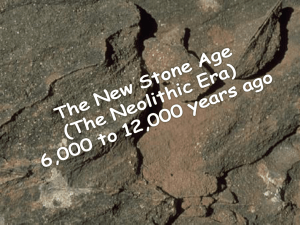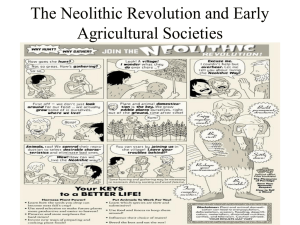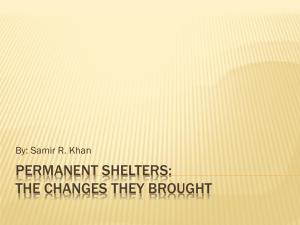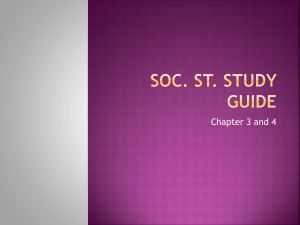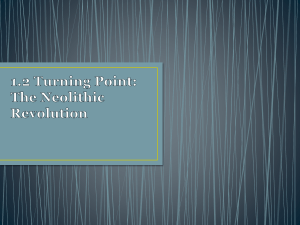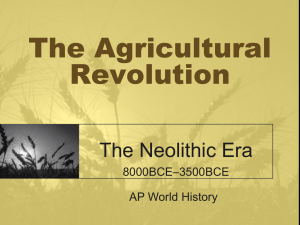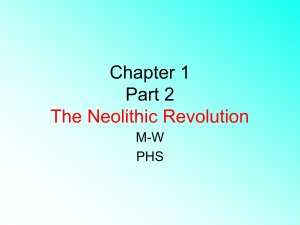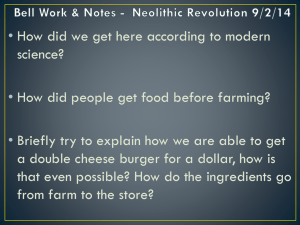Neolithic - Life Learning Cloud
advertisement
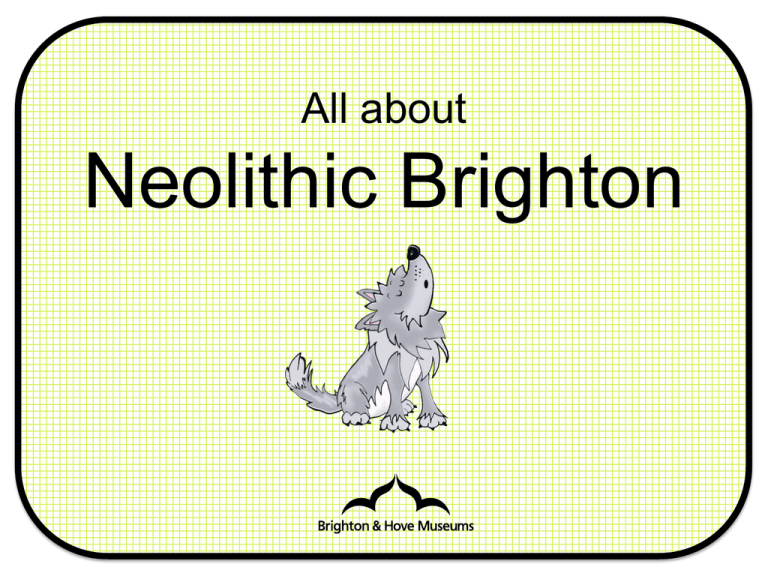
All about Neolithic Brighton Neolithic Can you think of any other words that begin with ‘Neo’? What do you think it means? Neolithic? So what does it mean? Neo = New Lithic = Made of stone Neolithic = The New Stone Age So just how new is new? Pssst - BP means before present day Palaeolith ic Black Rock 250,000 years BP Neolithic Iron Age Whitehawk 5,700 years BP Hollingbury 2,600 years BP Mesolithi c Bronze Age Falmer 10,000 years BP Hove Barrow 3,500 years BP Here’s how the Neolithic fits into our local timeline – it’s an exciting time because it marks the transition between the Older Stone Age and a brand new age – the Bronze Age Find out about the Neolithic It’s time to use your investigation and IT skills to go on a fact-finding mission about life in Neolithic times… 1. Which animals were domesticated for the first time in the Neolithic, and what effect did this have on the lives of people? 2. Which food was the first food to be stored for long periods of time? 3. What did the first settlements look like? At Whitehawk there is evidence of a causewayed enclosure, built over 5,000 years ago. It is one of only seventy similar sites in the UK – so they are quite rare. Our causwayed enclosure is huge – about the size of eight football pitches! It consists of at least four concentric ditches and banks, dug deep into the earth. Here’s an artist’s impression of what it might have looked like. We don’t know for sure what something like this would have been used for. What do you think? To get together for a feast with friends, family and the wider community? To get together to celebrate an early form of weddings? To worship an early form of god or religion? A place to keep cattle? A place for trade? Do these extra clues back up your theory? Or make you change your mind? Here’s just one possibility … At Brighton Museum we have an impressive collection of pottery from around this time, including these pieces How do you think they were made? What would they have been used for? Would they have been made by men or women? How can you tell we didn’t find all these pieces in one intact piece? How would we go about reassembling one of these pots from all the separate pieces? What does this pottery tell us about the lives of people living in Neolithic Brighton? Do any of these early pottery pieces remind you if anything you have at home today? Grubs up! Anybody brave enough to try a Neolithic recipe? Thanks for downloading, see you soon!


